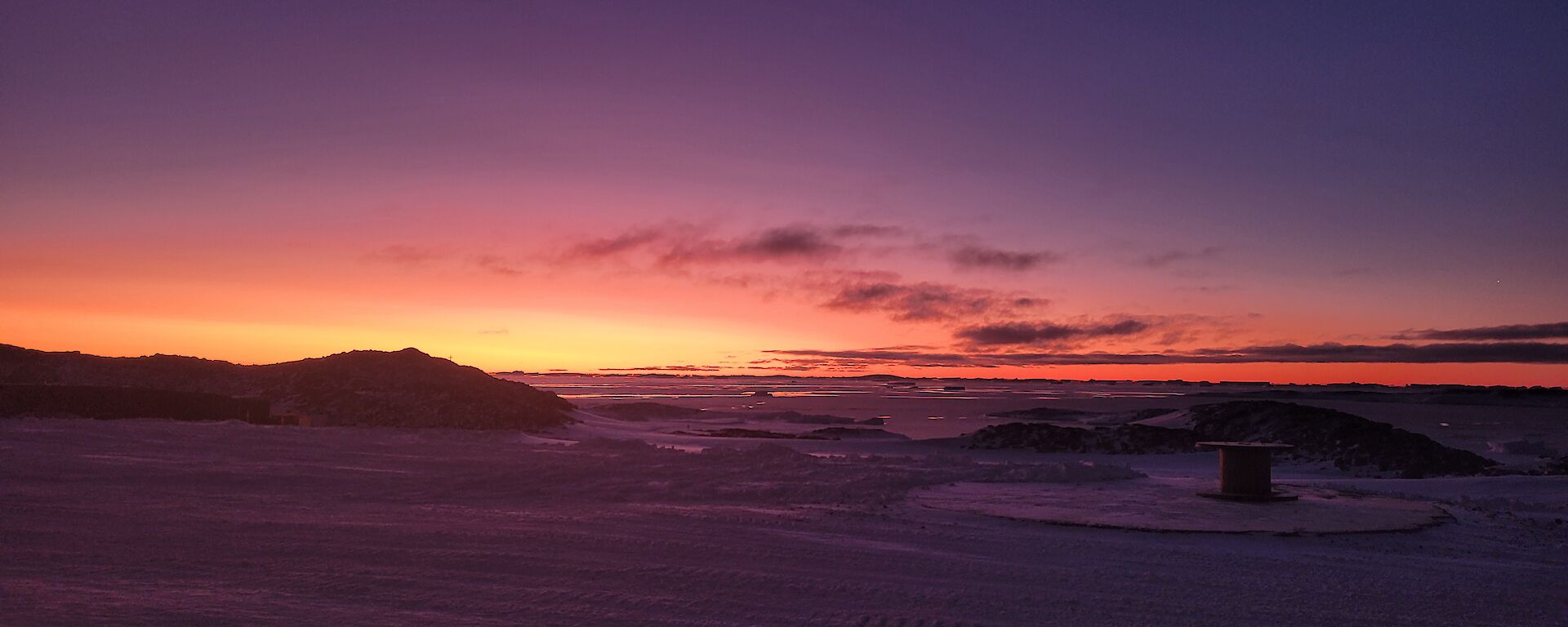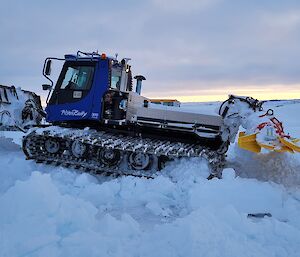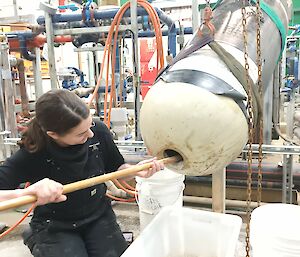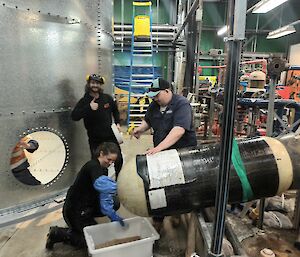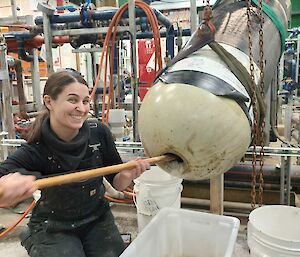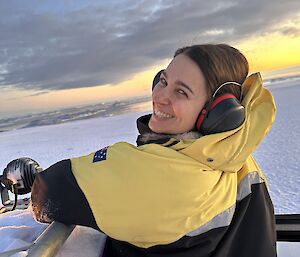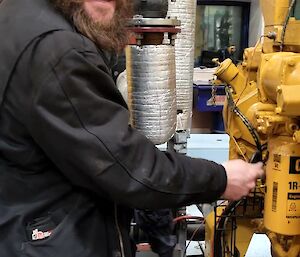Casey station is home to lots of highly skilled individuals with arcane knowledge of pipes, grease, wires, woody stuff, and spinny stuff. And clouds, and paperwork. Everyone has their niche, which they fill with years of experience and wisdom. This place would fall apart without such intricate knowledge. When I get the chance, I love wandering into the workplaces of my colleagues, just to see what they do all day. I’m always fascinated by the technical language (eg, "no, not like that! Get that bit!”), the looks of concentration, and the quiet aptitude of Casey’s amazing people.
With persistence, I can sometimes while my way into ‘assisting’ a colleague in some lay-person-appropriate task. One day, I had the honour of shovelling calcite from a filter tank in our tank house. Billy, one of our charming plumbers, fashioned a scoop and armed me with elbow-length gloves to aid the scooping. We lifted the fiberglass tank up with slings and a block and tackle, then tipped it onto its side where I spent a happy hour scooping the wet grits, then chatting to Billy while we picked clay balls from the mix (why the clay balls were in there is another story, involving some misplaced coarse calcite and a ‘clever’ but unsuccessful hack. Note to all, clay balls float). After we had sorted our grits, Billy and I put the tank back in position, then balanced on the adjacent pipework where I scooped the wet calcite back into the tank with a big flour scoop from the kitchen. Billy held the funnel and kept me laughing. I reckon we made a great team.
After my stint as an apprentice plumber, I was keen to wrap my knuckles around some of the other trades. Next stop, off to Penguin Pass just outside station with Jack, one of our indubitable Traverse mechanics and all-round larrikin. Our task - dig three PistenBully snow groomers from their blizz-piles, before they were buried out of sight. Armed with shovels and the luck of some relatively mild weather (maybe only -15 and low winds), we jumped-to and gave that hard blizz-snow hell. We switched between hacking at the icy snow compacted around the front blade hydraulics and the rear tiller, and getting down on hands and knees to scoop snow out of the engine bay. We hooked up a Herman Nelson (portable diesel heater thingy) to help melt things out, but mostly it was grunt work. Once the front blades were mostly extricated, Jack revved up each groomer and used its own power to crack through the final chunks of ice. The blades came free, but before the groomer could escape its ice trench we had to dig huge blocks of snow out from between the tracks. My back was not especially happy with the rough treatment, but my inner child was on cloud nine. I love digging! There’s something in it, in the simple, physical task - something that is a fundamental part of happiness.
Sometimes I snag the dubious but thrilling honour of being an offsider to one of the diesos doing late evening powerhouse observations during red travel conditions. When our weather ramps it up a notch and we get visibility under 100 meters and winds over 60 knots, the station leader calls red travel conditions, which requires travel in pairs and radio calls on exiting and entering buildings. Being somewhat slight, I wisely offer my services to Tim, another of our steadfast Traverse mechanics, who just happens to be over 6 foot and very strong. At least he can catch me when I get blown over. Listening to the deep thrum of our big powerhouse engines and watching Tim slug oil into the thirsty beasts is strangely enthralling. The engine smells and sounds remind me of my dad and my brother, so far away. I think that’s why I like the powerhouse.
My other day job is cooking. I like that, too.
Claire Moser, Casey Station Chef

